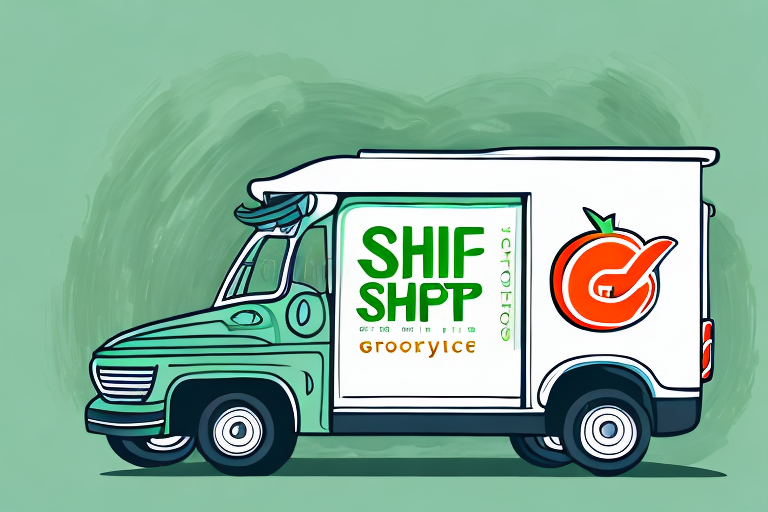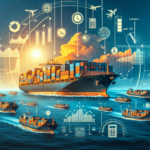Understanding Shipping and Delivery: Definitions and Key Differences
If you are a frequent online shopper or business owner, you may have come across terms like 'delivery' and 'shipping' and wondered what the difference between these two terms is. In this comprehensive article, we will explore the different aspects of shipping and delivery to help you understand the distinctions between them and choose the right service for your needs.
Shipping refers to the process of transporting goods from one location to another, usually by air, sea, or land. In contrast, delivery involves the final stage of the transportation process, where the goods are brought to the buyer's doorstep. Therefore, while shipping involves the movement of goods between two points, delivery refers to the last mile delivery that gets the package to its final destination.
It is important to note that shipping and delivery are not always handled by the same company or service. In some cases, a company may specialize in shipping goods from one location to another, while another company may specialize in the final delivery to the buyer. This is especially true for international shipments, where multiple companies may be involved in the transportation process. Understanding the roles and responsibilities of each company involved in the logistics chain is crucial for ensuring timely and efficient delivery of goods.
Types of Shipping and Delivery Methods
Shipping Methods
Shipping is an essential part of the supply chain, and there are different types of shipping methods available to transportation companies. Some of the popular shipping methods include:
- Ground Shipping: This involves shipping goods through road transport and is the most cost-effective method of shipping.
- Air Shipping: This involves shipping goods via air cargo, which is the fastest shipping method but also the most expensive.
- Sea Shipping: This involves shipping goods via sea vessels. It is the most affordable method of shipping for bulky items but also the slowest.
Aside from these traditional shipping methods, there are also emerging methods gaining popularity:
- Rail Shipping: Transporting goods via rail networks is often used for shipping large quantities of goods over long distances, offering a balance between cost and speed.
- Drone Delivery: Utilizing unmanned aerial vehicles (UAVs) to deliver packages is an emerging method that has the potential to revolutionize the shipping industry by providing faster and more efficient delivery options, especially for small packages and in remote areas.
Pros and Cons of Shipping vs Delivery
Pros of Shipping
- Offers a variety of shipping options to meet different needs.
- Extends the reach of businesses to customers worldwide.
- Provides affordable shipping rates for bulky or heavy items.
Cons of Shipping
- Package handling can be rough, which may lead to item damage.
- Can be time-consuming, especially for international shipping.
- Relies on third-party logistics providers, which may lead to delays or lost packages.
Pros of Delivery
- Allows for direct customer engagement and personalized service.
- Offers more control over the delivery process, including scheduling.
- Usually faster than traditional shipping, especially with same-day options.
Cons of Delivery
- Can be more expensive than shipping, particularly for last-mile logistics.
- Restricted delivery hours may inconvenience some customers.
- May be affected by factors such as weather, traffic, and vehicle breakdowns.
Some businesses may offer both shipping and delivery options, allowing customers to choose the method that best suits their needs. This can provide added convenience and flexibility for customers but may also require additional resources and coordination for the business.
Factors Affecting Shipping and Delivery Times
If you're looking to ship or receive goods, it's essential to understand the factors that can affect shipping and delivery times. Some of these factors include:
- Distance: The greater the distance between the origin and destination, the longer the shipping time.
- Mode of Transportation: Air shipping is faster than sea or ground shipping.
- Weight and Size of the Package: Heavier and larger packages may take longer to process and transport.
- Customs Clearance: For international shipments, delays can occur due to customs processing.
- Location-Specific Issues: Remote or hard-to-reach areas can extend delivery times.
Additionally, the time of year can significantly impact shipping and delivery times. During peak seasons like holidays, shipping companies may experience higher volumes of packages, leading to delays. Weather conditions, such as hurricanes or snowstorms, can also disrupt shipping schedules, especially in areas prone to extreme weather events.
The shipping carrier you choose can also influence delivery times. Some carriers offer expedited shipping options for an additional fee, while others may have longer delivery times for certain locations. It's important to weigh the cost and speed of delivery when selecting a shipping carrier to meet your needs.
Shipping and Delivery Costs: What to Expect
The cost of shipping or delivery depends on several factors, including package weight, distance, shipping speed, and additional services such as insurance or tracking. Generally, delivery is more expensive than shipping, primarily because it involves the last mile delivery to the customer's doorstep.
To get the best value for your money, it's advisable to compare different shipping and delivery options based on your specific needs. Consider the type of item you're shipping or delivering; fragile or oversized items may require special handling, which can increase the cost. Additionally, some shipping and delivery companies offer insurance options to protect your package during transit, affecting the overall cost.
Implementing tools like rate calculators provided by carriers (e.g., UPS, FedEx) can help you estimate and compare costs effectively.
Common Misconceptions and Pitfalls in Shipping and Delivery
Common Misconceptions
- Shipping and Delivery Are the Same: Shipping refers to the transportation of goods from one location to another, while delivery involves the final handoff to the customer.
- Shipping Is Always More Expensive Than Delivery: In reality, delivery, especially last-mile delivery, can be more expensive due to complexities and costs associated with reaching the final destination.
- International Shipping Is Always Slower Than Domestic Delivery: While international shipping generally takes longer, express shipping services can offer competitive delivery times comparable to domestic options.
Avoiding Common Pitfalls
When it comes to shipping and delivery, several common pitfalls can affect your experience. Here are some tips on how to avoid them:
- Choose a Reputable Logistics Provider: Selecting a trusted carrier reduces the risk of delays and lost packages.
- Double-Check Shipping Addresses: Ensure that the shipping address and contact information are accurate to prevent delivery issues.
- Verify Package Size and Weight: Incorrect package dimensions or weight can lead to unexpected costs or delays.
- Read Terms and Conditions: Understanding the fine print can help you avoid hidden fees and other surprises.
Future Trends in Shipping and Delivery
The logistics industry is evolving rapidly, with technological advancements promising to revolutionize shipping and delivery in ways we never thought possible. Some of the key trends to watch out for include:
- Drone Deliveries: Drones offer the potential for faster and more efficient deliveries, especially in urban and remote areas.
- Autonomous Vehicles: Self-driving delivery trucks and vehicles can reduce labor costs and increase delivery efficiency.
- Blockchain Technology: Blockchain can enhance transparency and security in the shipping process, reducing fraud and improving tracking.
The future of shipping and delivery is bright, with expectations for more efficient, faster, and secure solutions in the coming years.
In conclusion, understanding the differences between shipping and delivery is essential in choosing the right service for your needs. By delving into the basics, exploring different shipping types, discussing pros and cons, and providing tips on avoiding common pitfalls, you can make informed decisions on shipping or delivering your goods with ease.




















